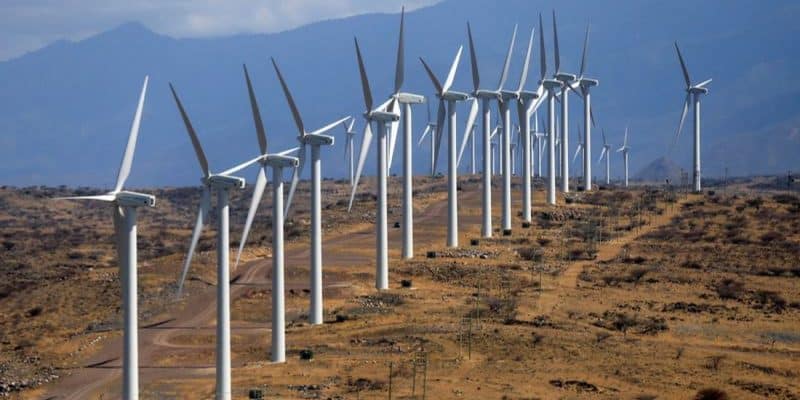Anderson Kehbila, Stockholm Environment Institute
Kenya’s ambition is to reduce carbon emissions by one-third by 2030, relative to the business-as-usual scenario of 143 metric tonnes of carbon dioxide equivalent. It also seeks to reduce carbon emissions to as close to zero as possible by 2050. How and whether these goals are achieved will have huge implications for the country’s economic development.
Over the past decade, Kenya has taken unprecedented measures to move towards low-carbon energy sources. Despite increasing electricity demand over the past decade, carbon emissions in the power sector have been on a decline. This is because renewable energy sources such as hydropower, geothermal, wind and solar have continued to slowly replace power plants that run on fossil fuels, such as diesel. These clean sources made up 90% of Kenya’s total energy source in 2022. Their share is likely to increase following the country’s plan to promote private sector deployment of renewable electricity at competitive bidding prices in the near future.
The challenge, not only for Kenya but for all developing countries, is that there is no template for moving to a low-carbon future while accelerating economic growth and development. Kenya seeks to achieve all three goals. The emissions, economic growth and development targets are contained in the country’s updated Nationally Determined Contributions and its economic blueprint, Vision 2030.
I have been researching the shift from fossil fuels to renewable energies in Africa for the last 16 years. As I argue in a recently published paper, Kenya could potentially achieve 100% electricity generation from clean energy sources by 2030.
This could, however, be undermined by plans to build a major coal-fired power plant from 2024. These plans are on ice after the high court suspended the plant’s licence due to environmental concerns. But if it eventually goes ahead, Kenya’s carbon emissions from the cheap and highly carbon intensive coal power plant would likely increase by 64% by 2040 compared to the 2025 level. That would reverse progress towards reducing emissions by one-third by the end of the decade.
Therefore, continued investment in renewable energy will be necessary to reduce power sector emissions, as I have argued in my paper. Such a transition should ensure universal and affordable access to electricity while creating decent green job opportunities and supporting the growth of the manufacturing sector.
Other ways of reducing emissions
Beyond electrification, a promising technology for decarbonising the industrial sector is carbon capture and storage. That is, trapping emissions from fossil fuel sources. Others are energy conservation and the production of green hydrogen.
However, the use of these technologies in Kenya’s industrial sector is still in its infancy. With the right incentives, green technologies and practices could be scaled up in existing and new industrial zones. Redirecting waste from landfills is one way. Increasing energy efficiency and conservation, through energy efficient equipment and changing behaviour, is another.
In the agriculture, forestry and other land use sector, carbon emissions are projected to increase from the equivalent of 73 million tonnes of carbon dioxide in 2010 to 143 million tonnes in 2030. This is mainly because of the high rate of deforestation and degradation, driven by the demand for fuel wood and charcoal. To address this, the government recently launched an initiative to plant 15 billion trees by 2032. The national policy objective is to attain a 30% tree cover by 2050 from the current cover of 12.13%.
Other important sources of emissions in Kenya are transport and residential cooking.
Decarbonising the transport sector
Kenya signed the COP26 declaration on “accelerating the transition to 100% zero-emission cars and vans”. Several national policy documents indicate the importance of electric mobility for low-emissions transport. Electric vehicles are therefore projected to make up about 5% of vehicle imports by 2025.
Besides, Kenya seeks to replace diesel-powered trains with electric ones, and turn to electrified urban buses. These are expected to play a much bigger role in the future transport sector.
Despite these and other policy measures, low levels of investment mean that road transport emissions are likely to increase between four- and 31-fold from 2010 to 2050. Investment is therefore needed in public charging stations and servicing for e-mobility. And private sector actors and startups in this area need financial incentives to reduce the high initial cost of investment.
Cutting household cooking emissions
In 2019, Kenya’s residential cooking carbon emissions were estimated to amount to the equivalent of 24.8 megatonnes of carbon dioxide annually, compared to the national total of 93.7 megatonnes. This is because a mere 24% of the population use clean cooking technologies and fuels. In spite of this, Kenya aims to achieve universal access to clean cooking by 2028 by promoting liquefied petroleum gas, bio-ethanol and other clean fuels.
Highly efficient wood stoves alone can reduce fuel wood use by 30%-60%. This can save about 624 hectares of forest and avoid the equivalent of 45,000 tonnes of carbon dioxide annually. But improved cookstoves and fuel are expensive. That’s why 75% of Kenyan families continue to rely on charcoal and firewood as their choice of cooking energy.
Transition to a low-carbon, climate-resilient economy
Although Kenya has plans to transition to a low-carbon, climate-resilient economy, implementation remains a major challenge. The government can take the following actions to address this issue:
- Use the draft National Green Fiscal Incentives Policy Framework to attract private-sector green investment at scale.
- Work with think tanks, international NGOs and universities to develop bankable project proposals for the Global Environment Facility, Green Climate Fund and Adaptation Fund.
- Facilitate partnerships with the World Bank’s green bond programme and the African Development Bank’s Africa Green Bank Initiative to scale climate actions and low-carbon energy transitions.
- Collaborate with development finance institutions, investors and international development organisations to refinance a portion of national debt at lower interest rates and longer repayment terms. This would provide savings to channel into low-carbon, climate-resilient development projects.
- Set up a comprehensive national incubation programme to test and commercialise local green innovations by offering training, business development, technology and finance support.
- Climate-proof infrastructure, community and other development projects to protect lives and livelihoods, and reduce direct losses from floods and droughts.
Anderson Kehbila, Programme Leader, Energy and Climate Change, Stockholm Environment Institute
This article is republished from The Conversation under a Creative Commons license. Read the original article.
Author
-

Programme Leader, Energy and Climate Change, Stockholm Environment Institute



